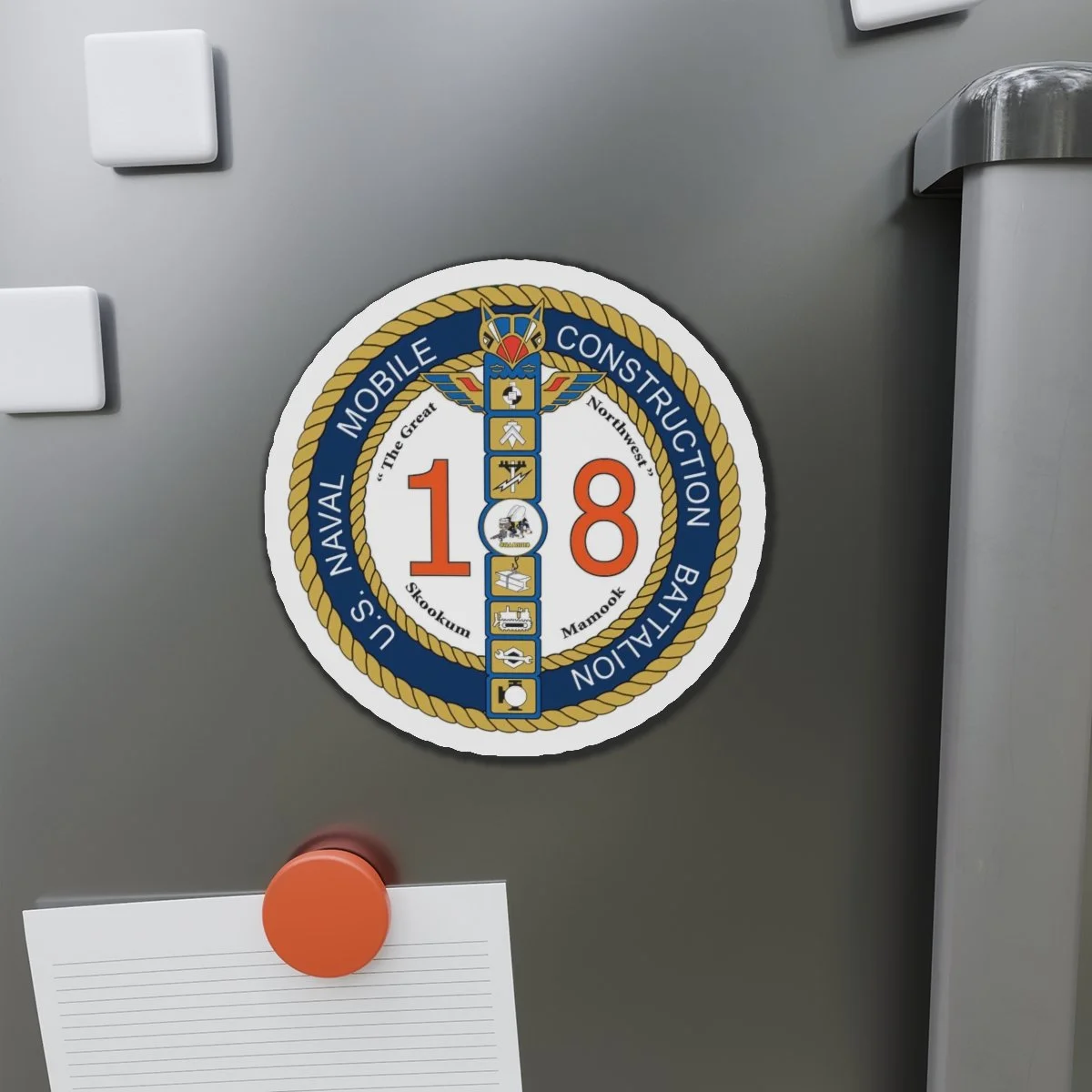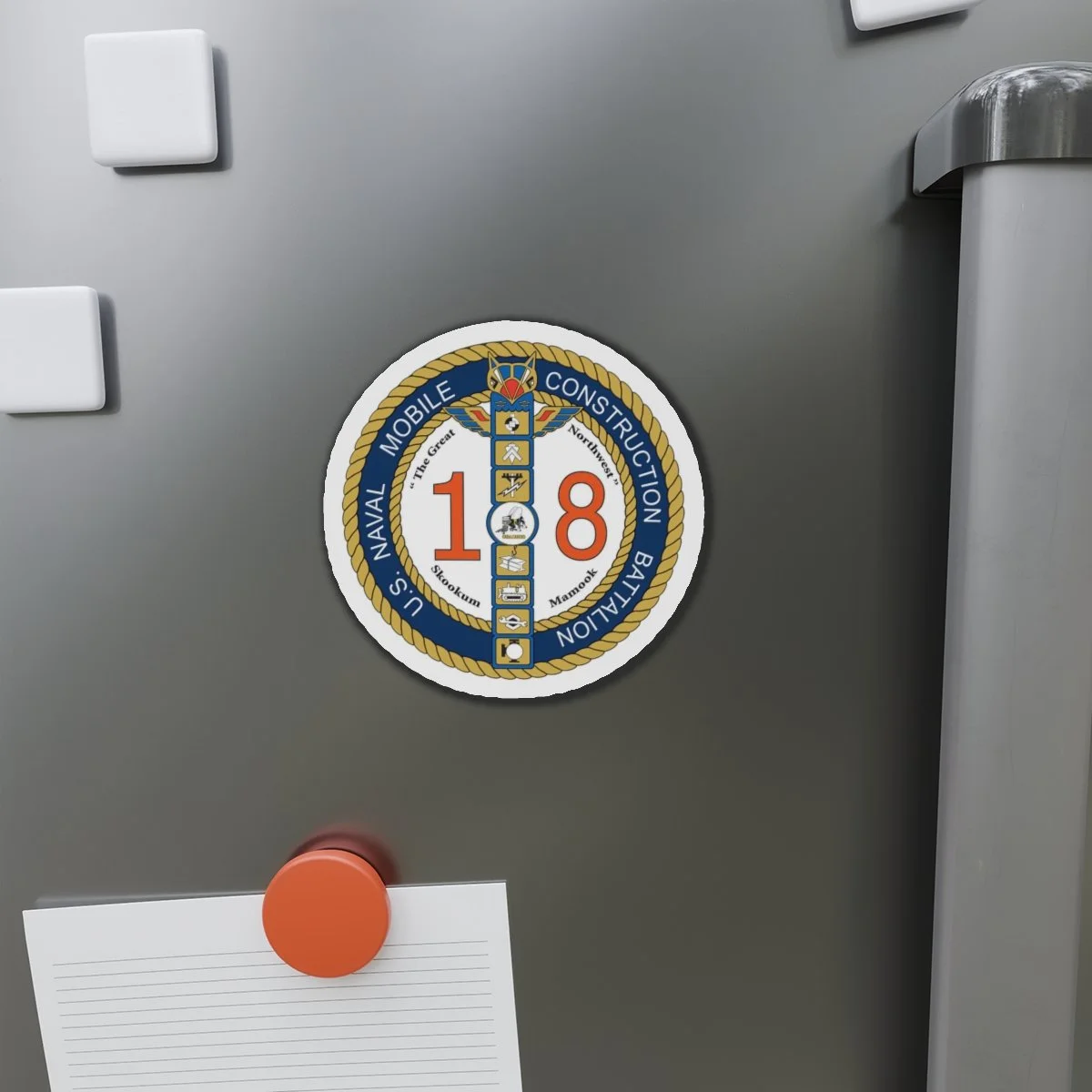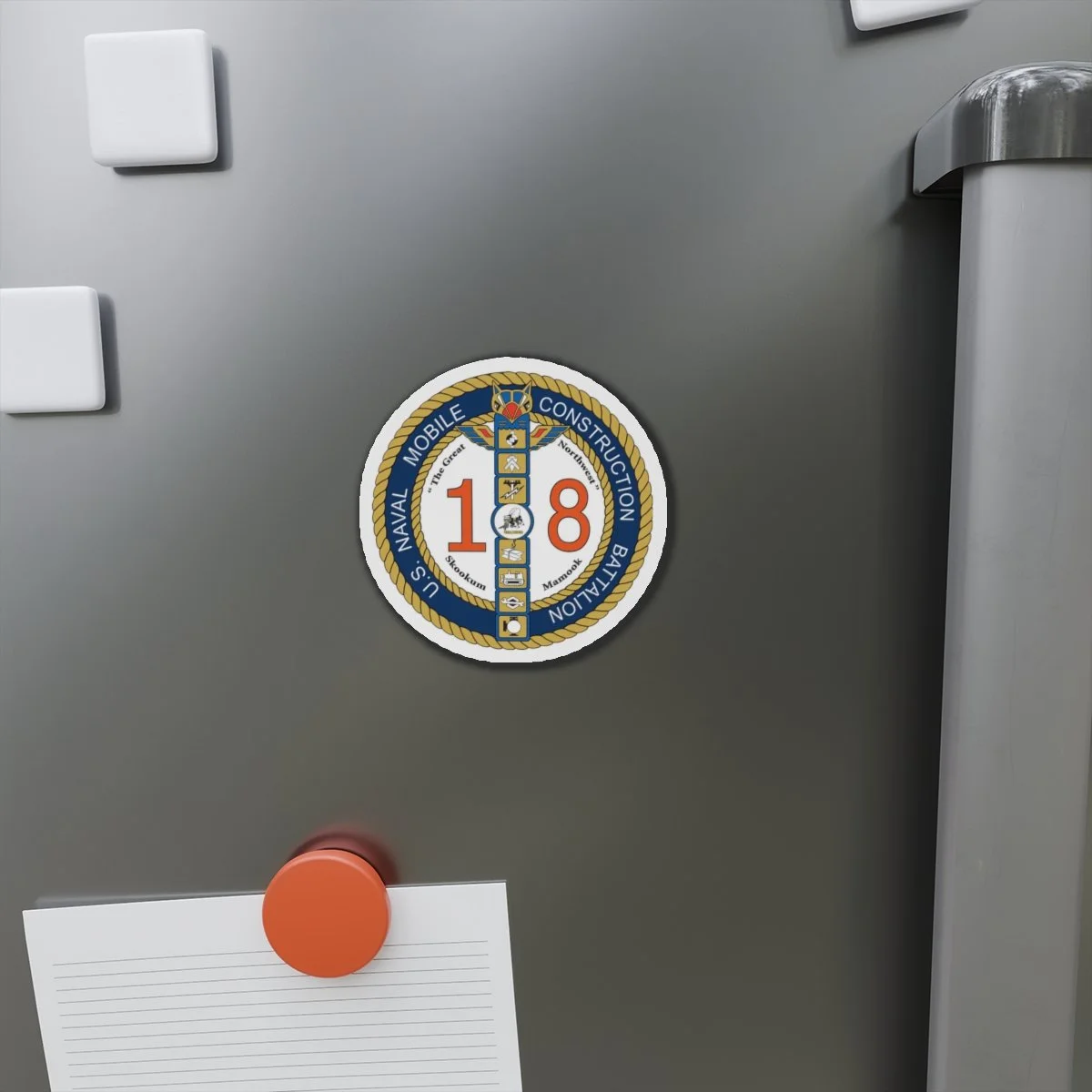 Image 1 of 5
Image 1 of 5

 Image 2 of 5
Image 2 of 5

 Image 3 of 5
Image 3 of 5

 Image 4 of 5
Image 4 of 5

 Image 5 of 5
Image 5 of 5






Naval Mobile Construction Battalion Fourteen (NMCB - 18) Car Truck Vinyl Magnet
from $6.50
Show your battalion pride with the NMCB-18 Die Cut Magnet. You can proudly put it on your car and remove when you have to wash your car or truck. Made with the die-cut technique, these magnets are flexible and highly durable. Choose between 5 different sizes and get the best fit for your decorating needs.
*Material: Vinyl
*Suitable for outdoor use
* Flexible and durable material
*Black backing
*Five sizes to choose from
NMCB-18 History
Naval Mobile Construction Battalion Eighteen (NMCB-18) has a storied history that stretches back to the early days of World War II, highlighting its critical role in the Pacific Theater of war. Initially, in July 1942, hundreds of officers and enlisted men gathered at Camp Allen, Norfolk, Virginia, for military training. By August 10, 1942, the 18th Naval Construction Battalion was officially formed, marking its establishment with the battalion's first parade. Assigned to the 2nd Marine Division as per the U.S. Marine Corps' request, the battalion quickly embarked on its mission, moving to Davisville, R.I., before deploying to the Pacific.
Throughout the war, NMCB-18 was integral in the construction and defense of key projects across the Pacific, demonstrating exceptional skill and determination under challenging conditions. From the construction of airfields on Guadalcanal to undertaking significant construction projects on Saipan, Tinian, and other critical locations, NMCB-18 proved essential in supporting Allied forces. The battalion's efforts in constructing airfields, roads, and base facilities under hostile conditions and with limited resources significantly contributed to the Allied success in the Pacific, earning them a formidable reputation.
After the war, NMCB-18 was decommissioned in June 1945, with its members either discharged or transferred to other battalions. However, the legacy of NMCB-18 was revived in 1960 when the Chief of Naval Operations authorized the establishment of Reserve Naval Mobile Construction Battalions, leading to the re-commissioning of NMCB-18 in 1962. Since its reactivation, NMCB-18 has continued to train and deploy in support of various operations worldwide, including Operations Desert Shield, Desert Storm, and Restore Hope in Somalia.
Now headquartered in Fort Lewis, Washington, after relocating from Puget Sound Naval Air Station due to a BRAC decision, NMCB-18 operates under the First Naval Construction Regiment of the First Naval Construction Division. The battalion, consisting of 12 detachments spread across the Pacific Northwest, embodies the Seabees' "Can Do" spirit, continuing its tradition of excellence in military construction and support across multiple states.
Size:
Shape:
Quantity:
Show your battalion pride with the NMCB-18 Die Cut Magnet. You can proudly put it on your car and remove when you have to wash your car or truck. Made with the die-cut technique, these magnets are flexible and highly durable. Choose between 5 different sizes and get the best fit for your decorating needs.
*Material: Vinyl
*Suitable for outdoor use
* Flexible and durable material
*Black backing
*Five sizes to choose from
NMCB-18 History
Naval Mobile Construction Battalion Eighteen (NMCB-18) has a storied history that stretches back to the early days of World War II, highlighting its critical role in the Pacific Theater of war. Initially, in July 1942, hundreds of officers and enlisted men gathered at Camp Allen, Norfolk, Virginia, for military training. By August 10, 1942, the 18th Naval Construction Battalion was officially formed, marking its establishment with the battalion's first parade. Assigned to the 2nd Marine Division as per the U.S. Marine Corps' request, the battalion quickly embarked on its mission, moving to Davisville, R.I., before deploying to the Pacific.
Throughout the war, NMCB-18 was integral in the construction and defense of key projects across the Pacific, demonstrating exceptional skill and determination under challenging conditions. From the construction of airfields on Guadalcanal to undertaking significant construction projects on Saipan, Tinian, and other critical locations, NMCB-18 proved essential in supporting Allied forces. The battalion's efforts in constructing airfields, roads, and base facilities under hostile conditions and with limited resources significantly contributed to the Allied success in the Pacific, earning them a formidable reputation.
After the war, NMCB-18 was decommissioned in June 1945, with its members either discharged or transferred to other battalions. However, the legacy of NMCB-18 was revived in 1960 when the Chief of Naval Operations authorized the establishment of Reserve Naval Mobile Construction Battalions, leading to the re-commissioning of NMCB-18 in 1962. Since its reactivation, NMCB-18 has continued to train and deploy in support of various operations worldwide, including Operations Desert Shield, Desert Storm, and Restore Hope in Somalia.
Now headquartered in Fort Lewis, Washington, after relocating from Puget Sound Naval Air Station due to a BRAC decision, NMCB-18 operates under the First Naval Construction Regiment of the First Naval Construction Division. The battalion, consisting of 12 detachments spread across the Pacific Northwest, embodies the Seabees' "Can Do" spirit, continuing its tradition of excellence in military construction and support across multiple states.
